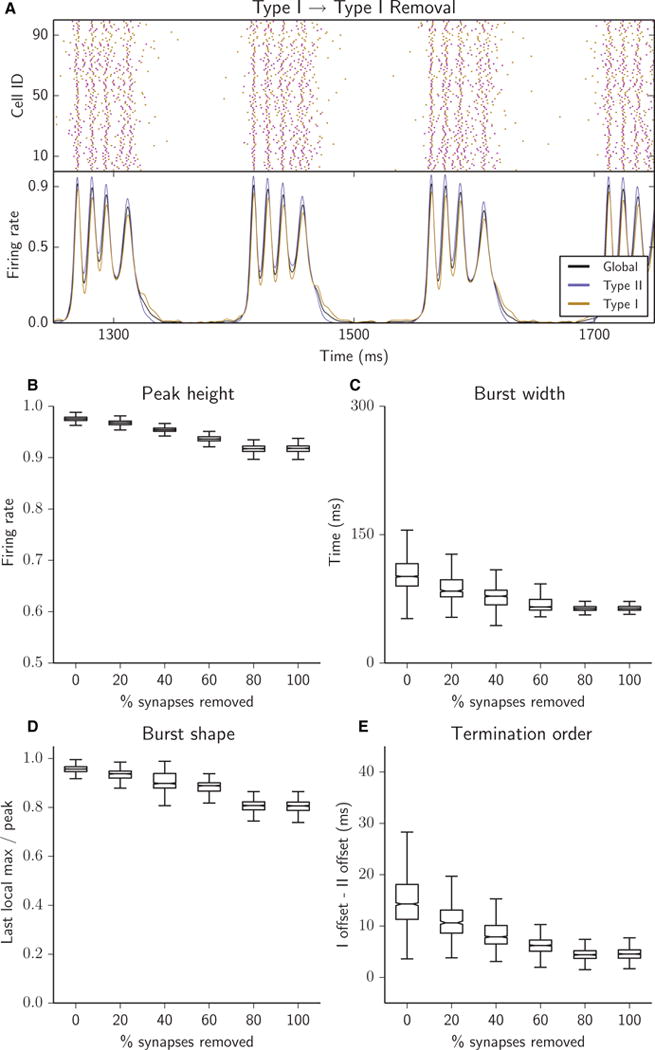Fig. 4.

Removing Type I–I synapses resulted in a highly regular network bursting structure and highly synchronized population bursts. Peak height decreased (B), burst width became consistently narrower (C), burst shape became more sloped (D), and bursts terminated with similar firing cessation of each cell type (E). (A–E) Raster plots (A, top panel), network firing rates (A, bottom panel) and bursting metrics (B–E, boxplots as in Fig. 2) for an excitatory heterogeneous network with 25% of synapses removed (A) or with 5% of synapses successively removed (B–E); all removed synapses were Type I–I.
